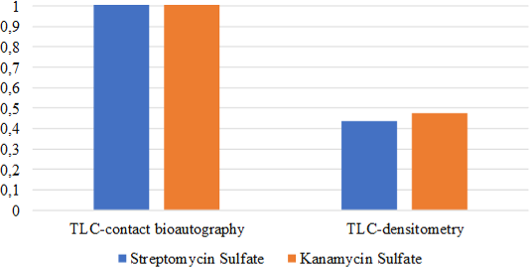Abstract
A simple, sensitive, and accurate TLC method was combined and validated for a simultaneous limit test of streptomycin sulfate and kanamycin sulfate residues in fresh fish meat. The optimum mobile phase was 10% potassium dihydrogen phosphate. TLC-contact bioautography used Staphylococcus aureus ATCC 29737 as a test organism. For TLC-densitometry, analyte spots were detected using 1% w/v ninhydrin in ethanol and maximum absorbance at 400 nm. TLC-contact bioautography and TLC-densitometry methods were validated according to USP guidelines for the limit test with respect to selectivity and limit of detection (LOD) added with the accuracy of a recovery test of streptomycin sulfate and kanamycin sulfate in fresh fish samples was developed and validated. The result of LOD from the TLC-contact bioautography method for streptomycin sulfate and kanamycin sulfate were obtained 0.7028 µg and 0.8032 µg, respectively. Meanwhile, LOD of the TLC-densitometry method for streptomycin sulfate and kanamycin sulfate were obtained 0.0631 µg and 0.0685 µg, respectively. In this study, TLC-contact bioautography method showed better results than TLC-densitometry. TLC-contact bioautography appears a good choice for the simultaneous limit test of streptomycin sulfate and kanamycin sulfate residues in fresh fish samples.
Full text article
Authors

This work is licensed under a Creative Commons Attribution-NonCommercial-NoDerivatives 4.0 International License.

